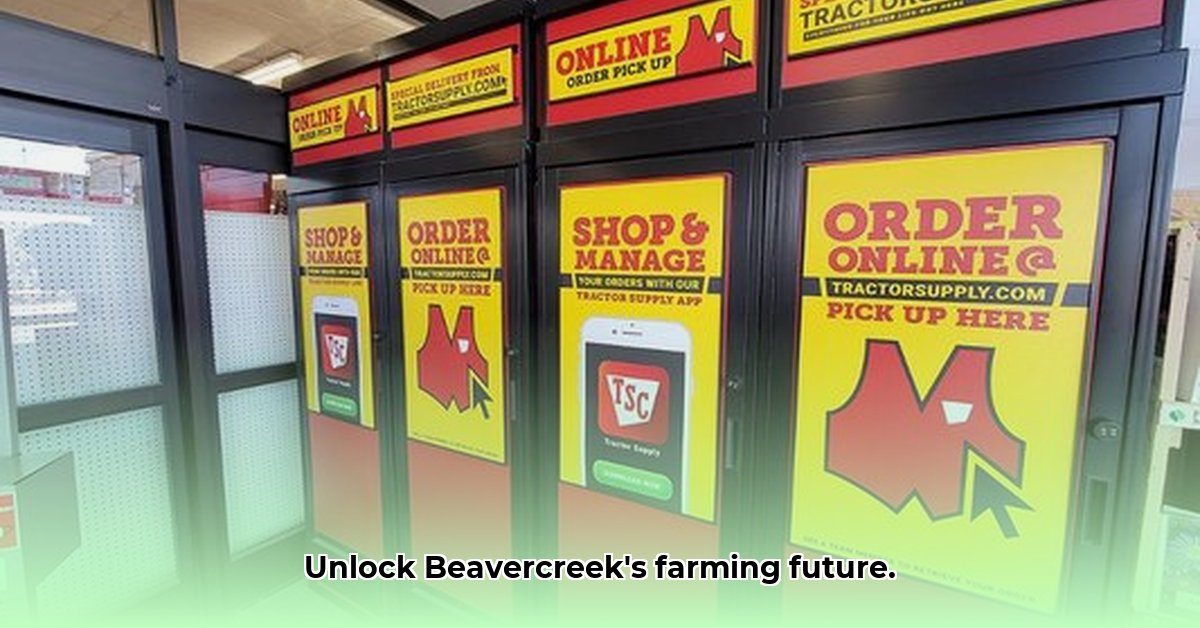
Tractor Supply's Ohio Footprint: A Statewide Analysis
Tractor Supply Company (TSC) holds a significant presence in Ohio, operating numerous stores across the state. While precise figures require further research (referencing state business registries and online resources), its widespread reach is undeniable. The Beavercreek location serves as a valuable case study, illustrating the potential impact of TSC stores on sustainable agriculture within their respective communities. However, analyzing TSC's complete Ohio footprint, including store density and geographic distribution relative to farmland, will provide a more comprehensive understanding of its influence and accessibility to small- and large-scale farmers. For example, see this Ohio TSC location. Does this distribution adequately serve the diverse agricultural needs across the state, or are there underserved areas?
The Beavercreek Store: A Local Perspective
The Beavercreek TSC store operates as a prominent local supplier, providing goods and services to farmers and gardeners alike. Its effectiveness in supporting sustainable agriculture, however, hinges on its product offerings. This necessitates a detailed inventory analysis to determine the availability of key sustainable products such as organic seeds, natural fertilizers, and water-efficient irrigation systems. How does Beavercreek's inventory compare to the needs of local farmers? Is there a sufficient selection to drive sustainable practices?
Sustainable Farming Supplies: Assessing Availability
Sustainable agriculture demands specialized inputs. A comprehensive examination of TSC's Ohio product offerings, comparing them to the needs of both small-scale and large-scale farmers, is crucial. How effectively does TSC stock products that cater to the specific requirements of organic or regenerative farming techniques? Does the availability of these eco-friendly options align with consumer demand? Are there substantial gaps, requiring expansion of the product line to fully support the transition to sustainable agriculture? This analysis requires robust data collection and comparisons.
TSC's Impact: A Balanced View
TSC's role in Ohio's sustainable agriculture sector presents a complex picture. While providing access to essential supplies, even for conventional practices, a significant question remains: Does the emphasis on conventional products overshadow the promotion and accessibility of sustainable alternatives? Mapping TSC store locations against farmland distribution can reveal accessibility disparities. Do farmers in all areas have equal access to sustainable supplies? Furthermore, pricing and farmer education play vital roles in adoption rates beyond mere product availability. Expert opinions on these challenges are vital for a complete assessment.
Stakeholder Perspectives and Actionable Steps
Effective progress toward sustainable agriculture in Ohio demands a collaborative effort among various stakeholders. The following outlines actionable steps for short-term and long-term impact:
| Stakeholder | Short-Term Actions | Long-Term Actions |
|---|---|---|
| Ohio Farmers (All Scales) | Conduct inventory checks at local TSC stores; provide direct feedback on product needs. | Advocate for expanded sustainable product lines; participate in collaborative initiatives with TSC and the Ohio Department of Agriculture. |
| Tractor Supply Company (TSC) | Conduct thorough inventory audits across all Ohio stores; analyze consumer demand for sustainable products. | Invest in employee training on sustainable agricultural practices; develop targeted marketing campaigns featuring sustainable products. |
| Ohio Department of Agriculture | Analyze TSC's statewide product distribution patterns and their impact on sustainable farming. | Partner with TSC and farmers to implement educational programs and workshops for sustainable farming techniques; offer incentives and grants. |
Conclusion: A Collaborative Path Forward
Tractor Supply Company possesses the potential to significantly contribute to the advancement of sustainable farming practices in Ohio. However, realizing this potential requires a multifaceted approach. Future research should prioritize comprehensive inventory data, analysis of TSC's internal sustainability initiatives, and a detailed exploration of farmer needs across the state. Through collaboration among farmers, TSC, and the Ohio Department of Agriculture, Ohio can achieve a more sustainable and resilient agricultural future. This collaborative path will require ongoing assessment and adaptation to ensure its effectiveness. The evidence presented suggests that the combination of improved product availability, targeted education initiatives, and robust support from governmental agencies holds the key to unlocking TSC’s potential as a catalyst for sustainable change within the Ohio agricultural landscape.